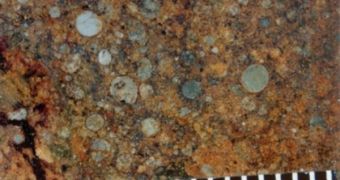British researchers have recently announced the creation of a new method of putting a time line on the most significant events that took place within our Solar System, relying on measuring concentrations of aluminum isotopes found in meteorites, comets, and other such bodies. In a new paper, published in the respected journal Science, they explain how this special type of isotopes can be used to track down events that are more than 4.5 billion years old, and which occurred when the Sun was still a newly formed star, with no planets around it, the BBC News reports.
More precisely, investigations that will be conducted with the help of the aluminum isotopes will analyze their decay rates, which have now been clearly linked with time frames. The goal is to get a better understanding of the chain of events that eventually led to the formation of our Solar System, in the first five million years after the Sun formed. This could be made possible, the team says, by the fact that the special isotopes decay constantly, and can therefore be used as a clock of sorts, which can be set back to its earliest days.
“We can now use the isotopes to measure the age of different chondrules, parts of meteorites, and understand far more about the early part of our Solar System,” Johan Villeneuve, one of the researchers who participated in the new study, told the British news outlet. He also believes that, in time, readings collected via this method could provide astronomers and astrophysicists with a better understanding of how planets appeared and differentiated from the ring of debris that was left around the Sun after its formation, called the protoplanetary disk.
“With their high precision measurements, they are able to date formation times for chondrules very precisely. And what is interesting is that they've shown that these building blocks for asteroids, and possibly for planets as well, formed over an extended period of two to three million years,” Imperial College London (ICL) expert Philip Bland says. He adds that the new Science paper is “a really nice study,” which could significantly further our knowledge about the world around us, and the Solar System as a whole.

 14 DAY TRIAL //
14 DAY TRIAL //